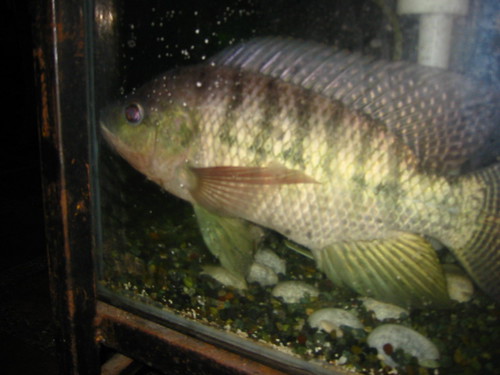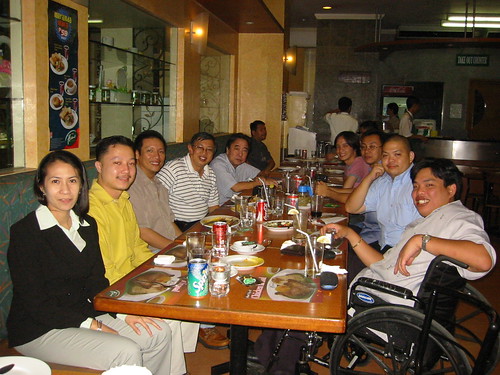My Mexican Tail Spot

We placed this fish in the big pond a few years ago. Two weeks ago we were able to capture it and placed it inside one of the house aquariums. My friend Gary Battung gave it to me a few years ago and somehow (miscommunication between me and my assistant who placed in the big pond - by the time I found out it was too small in size and the pond was too big, catching it would have been bothersome) it ended up in the big pond along with the convict cichlids ( Archocentrus nigrofasciatus or Cichlosoma nigrofasciatum). When it was placed it was the size of the convicts, rougly around two inches. Soon enough it grew and became top predator of the pond. Fortunately though the pond was big enough and had enough aquatic plants (Vallineria and Lotus) to protect the convict population from the predator fish.
Can you imagine if the Uropthalmus was placed in a community tank? All of the other fish would have been sushi. But then again the convict cichlid is also aggresive and it would have been easier to get it out of an aquarium.
Its really nice to see a fish in this case a cichlid grow. But what is a cichlid? Click here.
For more information about the Uropthalmus or Mayan Cichlid click here.





